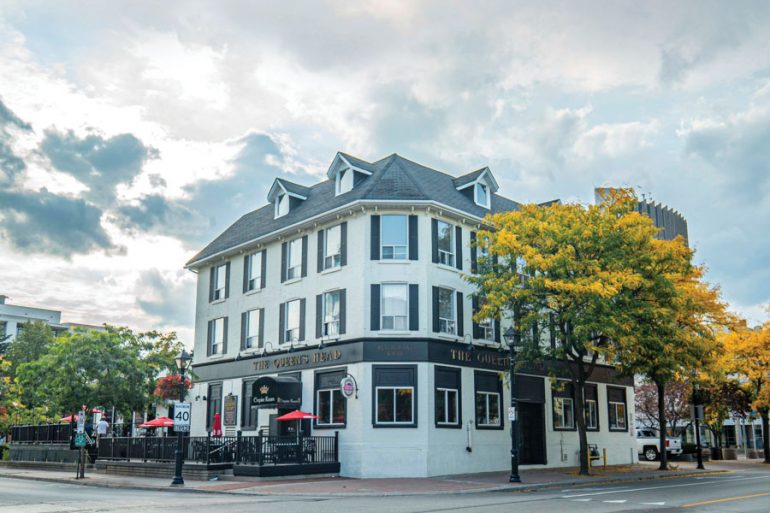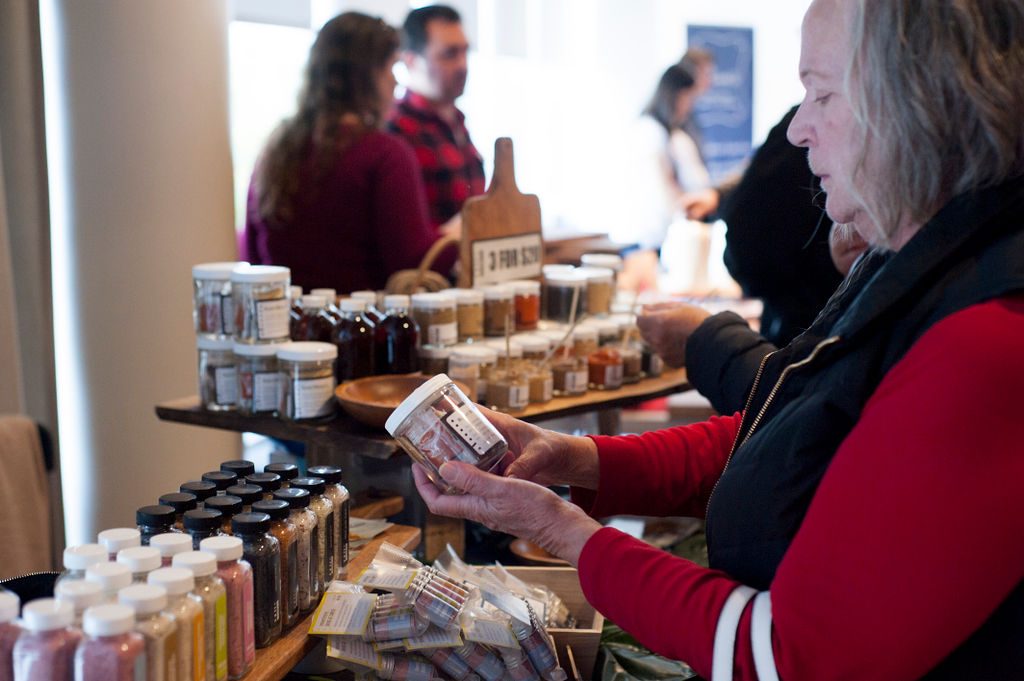People have always enjoyed a little cheer with their food, and Oakville and Burlington have provided both to our community for almost 200 years. Of course, the past holds secrets and surprises, so let’s look back and see what we find.
The idea of animal entertainment isn’t new, but the variety provided by one of Oakville’s most infamous taverns wouldn’t fly today. Thomas Lloyd kept a bear chained outside his tavern on Dunn Street and when business was slow, the bear would be fed a live pig to both excite and attract customers!
Oakville House, the town’s first inn, was more respectable. Owner William Sumner boasted that he offered “beds [that] are clean and comfortable – a larder well stored [and] good liquors purified by Ontario’s beautiful waters.” This building too has a bear in its origin story. Legend tells that during construction, local dogs treed a bear nearby. That bear faced a different fate as it soon became a rug to adorn the floor in front of the main fireplace.

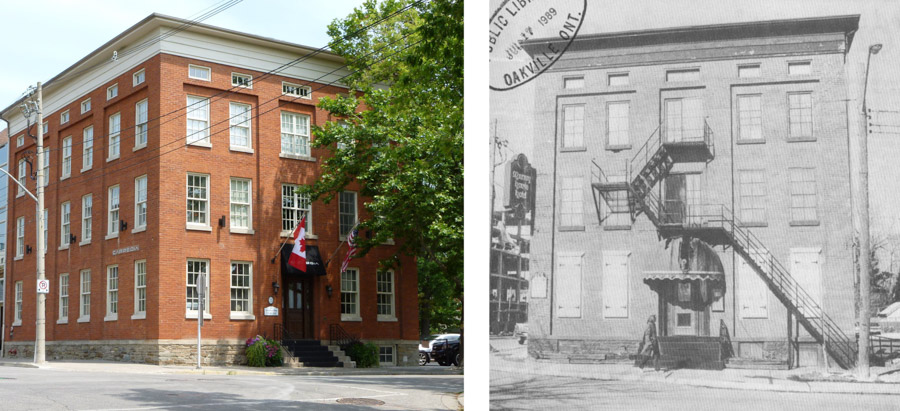
When well-known writer Anna Jamieson visited Sumner’s Inn in 1837, she was not impressed by the “vile prints” on the walls but was amused to find a copy of Don Juan in the parlour, a most sophisticated and modern addition. Sumner also hosted the to-be Lieutenant-Governor Sir Francis Bond Head, who “observed that it was the best tavern he had been to since leaving Albany”.
The Oakville House remained a fixture until the 1950’s when it was demolished – but only after surviving an astonishing seven fires! Luckily the tradition of good food continues today, as the building that houses Paradiso stands in that spot.
In 1896 The Toronto Cycling Club had a track built from Toronto to Oakville, and the Queen’s Hotel at the corner of Dunn and Colborne billed itself as the “Headquarters for horsemen and bicyclists” – hoping to attract the thirsty “wheelmen” after their races.
Heading West, the oldest hotel remaining in Oakville sits at Navy and Robinson Streets. It began as the Canadian Hotel in 1857, but became the Murray House in 1896. Now restored as offices, this handsome building is worth taking a minute to admire.
In 1845, adventurers continuing along the lake road would come to Thompson’s Hotel in Bronte. Over the years, the site was a grocery store, candy shop, post office, and a summer hotel! Named “Glendella” since 1887, it has recently been restored and is in use as boutique suites.
Today you can stroll around the corner to the Cove Bar and Restaurant, a trendy spot inhabiting an original 1840’s house. By 1900 a family of fishers lived here, making the prevalence of fish on Cove’s menu seem historically appropriate.
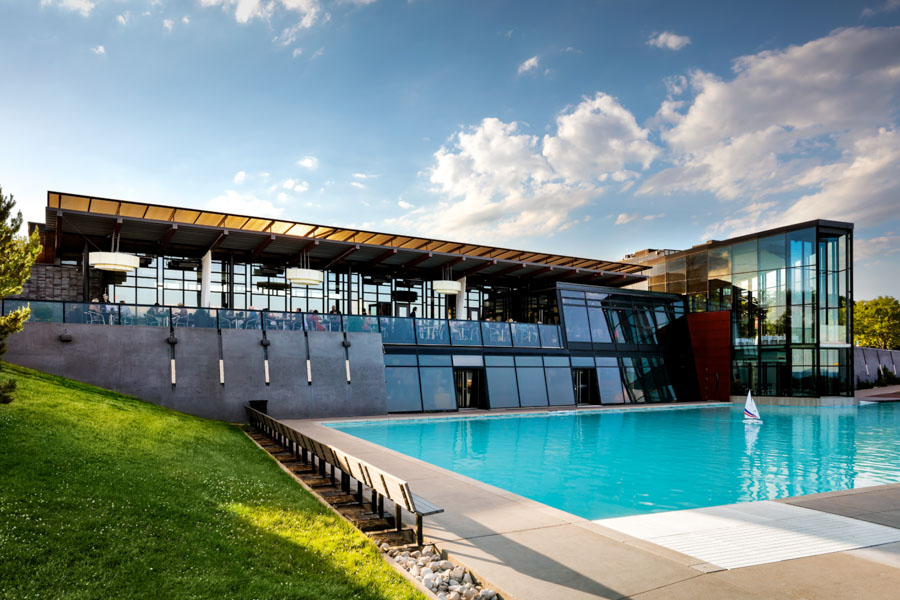
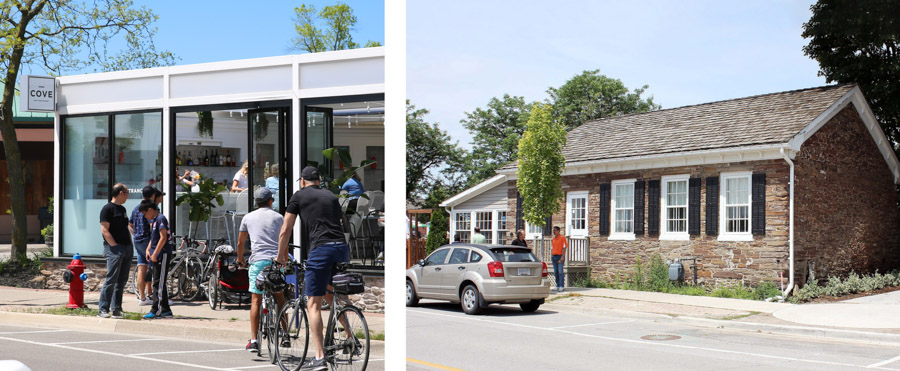
Steady your legs as we hop on the stagecoach to Burlington, where you could linger at “the Zimmerman house … a first-class resting place for The weary traveller.” Later it became the Queen’s Hotel, and today the same spot is The Queen’s Head, which operates as a classic British Pub.
On the waterfront stood the Estaminet Standard Hotel, managed by Emma and George Byrens. In 1919, “Canada’s House of Hospitality” served notables from Louis St. Laurent to Liberace! Emma would greet patrons accompanied by her parrot. The venue lived on to become the well-known Emma’s Back Porch named in her honour.
Our final stop is the once fabulous Brant Inn. In the 1940’s, people came to dance the night away with Louis Armstrong, Ella Fitzgerald, Benny Goodman, and Count Basie. Demolished in 1969, only a plaque now sits on the site. But don’t despair, nearby Spencer’s at The Waterfront affords dining with virtually the same lovely view of the lake.
The names may have changed but you can still have an excellent food and drink adventure while retracing the steps and places in our local hospitality history.
Julian Kingston has deep experience interpreting culture, art, history and the natural world. He currently takes care of the Oakville Museum at Erchless Estate, exploring as many ways as possible to tell Oakville’s stories. You should totally go.


